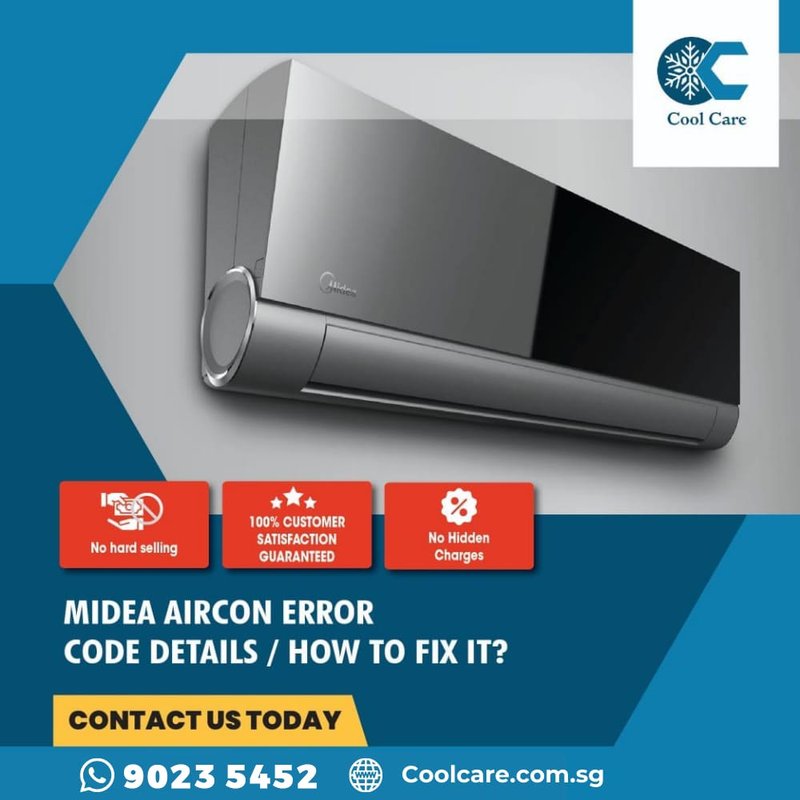
Let’s break it down. Your Midea air conditioner is like any diligent worker; it has systems in place to communicate when something’s amiss. The ‘F1’ code is its way of signaling that there’s a hiccup in its communication system, specifically pointing to issues with the indoor ambient temperature sensor. This sensor is crucial as it lets the unit know the room temperature, helping it decide when to cool things down. Without this sensor working properly, the air conditioner’s decision-making process gets a bit faulty, much like trying to bake without knowing the oven’s temperature. But fear not! Understanding the common causes and how to tackle them can help you troubleshoot this error effectively.
Understanding the Role of the Temperature Sensor
To fully understand why an error code like ‘F1’ appears, it’s important to grasp what the temperature sensor actually does. Think of the sensor as the air conditioner’s internal thermometer. Its job is to check how warm or cold the room is and send this information to the air conditioner’s control board. Just like how our bodies tell us to grab a sweater when it’s chilly, the sensor tells the air conditioner when to cool or stop.
Now, picture this: if the sensor isn’t working properly, it’s like wearing sunglasses indoors – things get a little confusing. The air conditioner might think the room is cooler or warmer than it really is, leading it to either not cool at all or work harder than it should. This not only affects comfort but can also shave years off your unit’s lifespan, much like running a marathon without warming up.
So, what could go wrong with the sensor? Well, sometimes dust or debris can cover it, much like how a pair of dirty glasses distorts our vision. Other times, a sensor might be faulty due to wear and tear, kind of like an old pair of shoes that’ve seen too many miles. Understanding these issues is the first step to getting your air conditioner back on track.
Common Causes of Error Code F1
Let’s dive into the typical culprits behind the ‘F1’ error code. Firstly, it could just be a connection issue. Imagine trying to call a friend with poor reception; sometimes wires or connections within the unit can be loose, causing the sensor to be ‘out of range’ or ‘unreachable.’
Secondly, the sensor might be malfunctioning. All electronic components have a lifespan, and if the sensor has been around the block a few times, it might just need replacement. Picture this as needing a new light bulb when the old one finally burns out.
Lastly, environmental factors could play a role. If your air conditioner is located in a particularly dusty room or a place with fluctuating temperatures, these conditions can affect how well the sensor operates. It’s similar to trying to read a thermometer in a sauna versus a cool room – the readings can be misleading.
Understanding these causes not only helps in tackling the problem but also aids in preventing future issues. Ensuring that the environment around your air conditioner is clean and stable, and keeping an eye on the sensor’s performance, can make a significant difference.
Steps to Troubleshoot the F1 Error Code
When faced with the ‘F1’ error, there are some straightforward steps you can take to potentially resolve the issue. First, perform a basic reset of the air conditioner. It’s like restarting your computer when it starts acting up. Unplug the unit, wait a few minutes, then plug it back in. This simple reset can sometimes clear error codes.
If that doesn’t work, inspect the sensor itself. This involves removing the unit’s casing to check for any obvious signs of wear or damage. Remember, safety first! Always disconnect the power before doing this. You might find the sensor covered in dust or slightly dislodged – clean it carefully and ensure it’s securely in place, akin to wiping smudges off those sunglasses.
Should the issue persist, it’s likely time to call in the professionals. A certified technician can provide a definitive assessment and replace any faulty parts. Think of this as going to a mechanic when your car makes that weird noise you can’t figure out.
Taking these steps can help get your air conditioner back to its best, ensuring that your home remains a comfortable haven from the heat.
Preventing Future Error Codes
To minimize the chances of seeing that pesky ‘F1’ error code again, regular maintenance is key. Much like how regular exercise keeps our bodies in good shape, routine checks can keep your air conditioner running smoothly. Dust the unit periodically, especially if it’s in an environment prone to collecting particles.
Next, ensure the room’s temperature is as consistent as possible. Wild fluctuations can strain the sensor, leading to more frequent issues. It’s like wearing layers of clothing instead of switching between a parka and a t-shirt in changing weather.
Lastly, consider professional servicing every year or so. Technicians can spot potential issues before they become significant problems, providing peace of mind that your the air conditioner will continue to perform effectively when you need it most.
By understanding these common causes and proactively preventing them, you’ll enjoy a more reliable cooling experience with your Midea air conditioner, so you can stay comfortable no matter the weather outside.